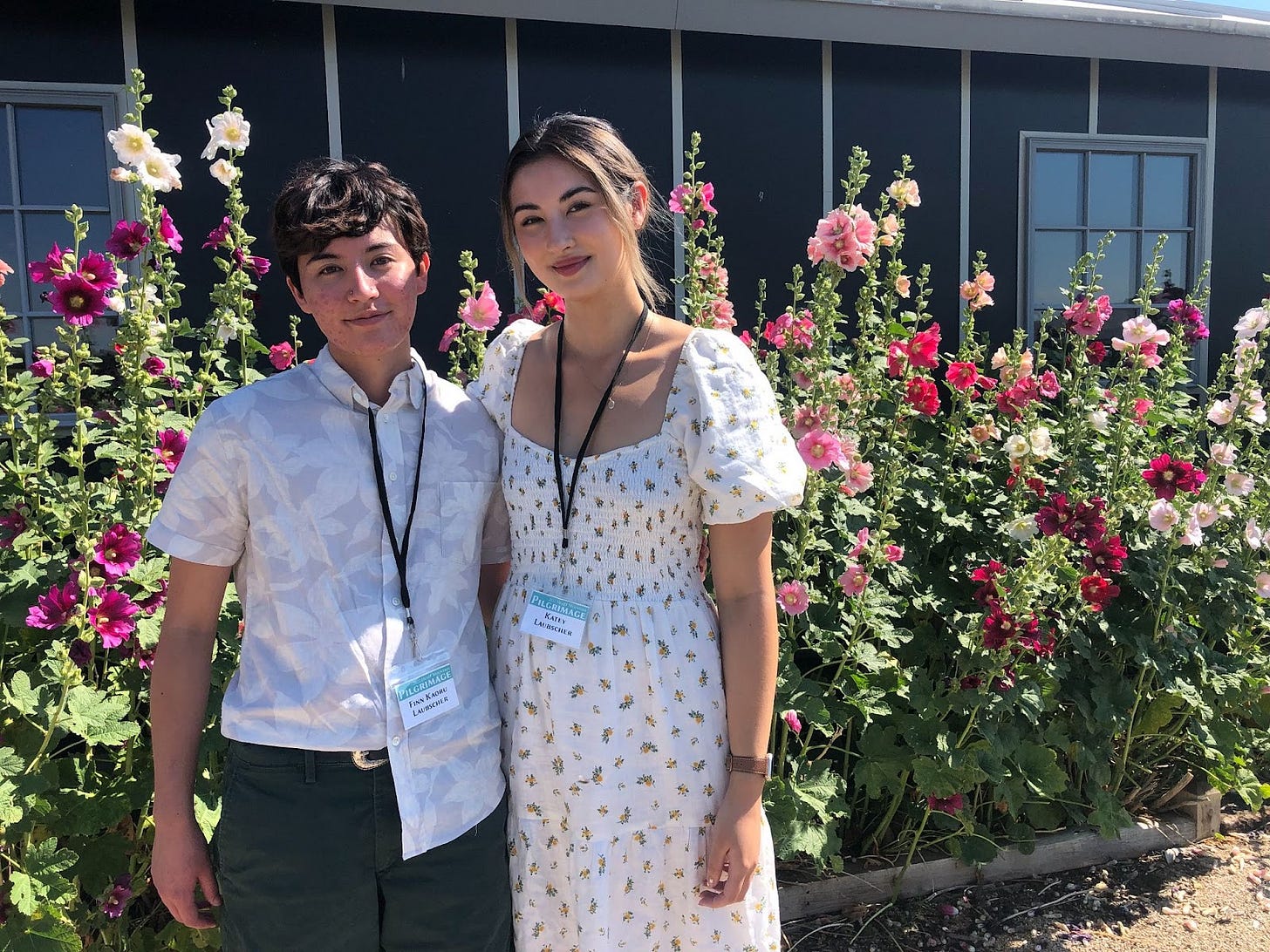On Monday evening, I was honored to give a presentation on my Japanese American cultural journal, Kioku, at ZAJA, a New York City group that brings together Japanese, Japanese Americans, and anyone interested in connecting with Japanese culture on a regular basis. I haven’t found it easy to tap into the Japanese community here and so I was thrilled to not only join in, but to be invited as a presenter. This was my first time speaking about Kioku to a public audience, and I couldn’t have asked for a better setting: the attendees were incredibly warm, receptive, and thoughtful.
As I spoke, I was reminded of my first pilgrimage, looking fondly around the room at so many Japanese faces — it felt like being surrounded by family I was just now meeting. This feeling was only reinforced as group members came up to me after my presentation, sharing their thoughts and stories with a generosity and brilliance that echoed the whole reason I started Kioku: to cultivate and uplift our community’s stories.
What inspired Kioku?
Kioku was inspired by my transformative experience at the Heart Mountain pilgrimage in Cody, WY. In July 2022, my brother Finn Kaoru, our grandmother Carol, and I joined the pilgrimage in an effort to honor our great-aunt Dorothy Haruko Nagai, who was incarcerated during World War II alongside over a hundred thousand other Japanese Americans — first in Santa Anita, CA, then at Heart Mountain — and to better understand what her experience might have been like. We were amazed by the welcome we received, and I was also deeply impacted by the stories I heard from fellow attendees — many of whom were former incarcerees or their descendants.
Through this experience, I finally realized for the first time that to be Japanese American is more than the sum of its parts, and that “failing” to be fully Japanese or completely American is not a failure at all, but authentic to my upbringing and my heritage. For the first time, I felt that who I am was exactly right. This feeling and the stories I heard was deeply intertwined, and I left with a new determination to find a way to immortalize those stories and share that feeling with others.
While the initial reason for my attendance at the pilgrimage was to honor my great-aunt Dorothy’s life and story, I now felt a greater responsibility to recall and preserve the lives and stories of as many in our community as possible. And having witnessed the incredible thoughtfulness and artistry of my fellow JAs, I knew that there was no shortage of stories or storytellers to help me do so. After some deep thinking, I landed on a magazine: able to evolve and grow, but tangible, something that can be displayed, held in your hands, and most importantly, passed down.
Why is it called Kioku?
We named the magazine Kioku because kioku is the more appropriate word to describe active remembrance (as opposed to omoide, another word for memory). The name captures the magazine’s purpose: breathing new life into our stories.
How was Kioku created?
The first issue took a year from conception to publication. I worked on it at night after my full-time job and during weekends with Finn, who is not only an incredibly talented visual artist but also writer and thinker. The cover is a photograph of our aunt taken by the great photographer Toyo Miyatake, which I hand-embroidered with gold thread, filling her hands with pine and mandarin blossoms (symbols of her family prefectures. The cover is not my attempt to honor Dorothy’s strength and beauty, and that of the tens of thousands of incarcerated Japanese Americans she represents.

As for the content within, Finn and I came up with pretty much every type of content we could think to include and worked hard to make it as high-quality as possible. This included odes to musubi, saimin, and mochi in haiku form (accompanied by gorgeous illustrations); long, researched essays; personal essays; cultural reviews; and even sudoku and a nonogram game. After successfully pulling off our first print run, we opened the second issue to contributors, and published submissions from 10 incredible artists that spanned everything from bilingual poetry to collages to sculpture. One of the most rewarding aspects of Kioku has been the privilege of receiving others’ artistry and having the opportunity to share it more widely.
What’s next for Kioku?
We are publishing our third issue in December and are working hard before press time; more information on our submission guidelines to come. This is very much a learning process for me and Finn, and putting the issue to bed by the end of the year will be no small feat. Beyond this year, we hope to ramp up the frequency of publishing and find ways to make Kioku more self-sustaining.
Support from our family, organizations like ZAJA and the Heart Mountain Wyoming Foundation, and friends / luminaries in the community (they are always synonymous in my experience) has propelled us this far, and I am looking forward to many more issues and adventures to come.
You can visit our website or Instagram to learn more, donate, and flip through the first issue digitally, and visit our Etsy storefront to purchase the first two issues in digital or print.






I cherish my first two editions, and I’m excited for the third!